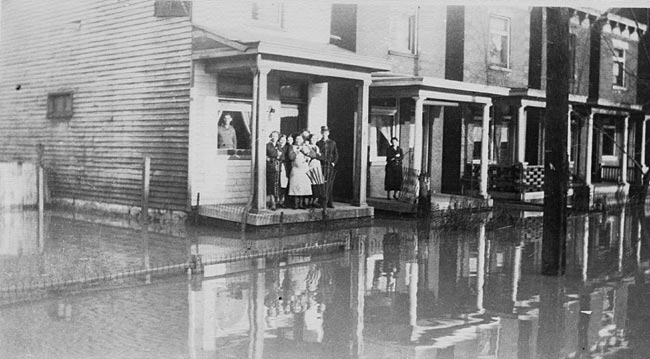In a landmark case of Progressive urban reform, the General Assembly approved "an act concerning tenement houses, apartment houses, and flat houses in cities of the first class" on March 21, 1910. The act was intended to ameliorate the growing problem of blighted urban housing. Strict provisions covered requirements for adequate light and ventilation, size of yards and distance between buildings, size and ventilation of inner courts, and the adequacy of air intakes. Detailed regulations were also imposed on the interiors of buildings, covering the size of rooms, lighting and ventilation, size of windows, privacy of bathrooms, and size, light, and ventilation for the interior public hallways. No tenement house built or altered "shall be accepted in whole or in part for human habitation until the issuance of a certificate by the health department that said building conforms in all respects to the requirements of this act."

Family on porch at Fourth and Saratoga streets during a flood, Newport, Kentucky, ca. 1937. Raymond Wehner lived in the first house and would enter from the back of the house. The Walkers lived in a house behind. Thirteen people, two dogs, and four cats were staying there during the flood. Their relatives were flooded out and five stayed on after the flood. Contributed by Raymond Wehner to the Ohio River Portrait Project, Kentucky Historical Society Collections.
